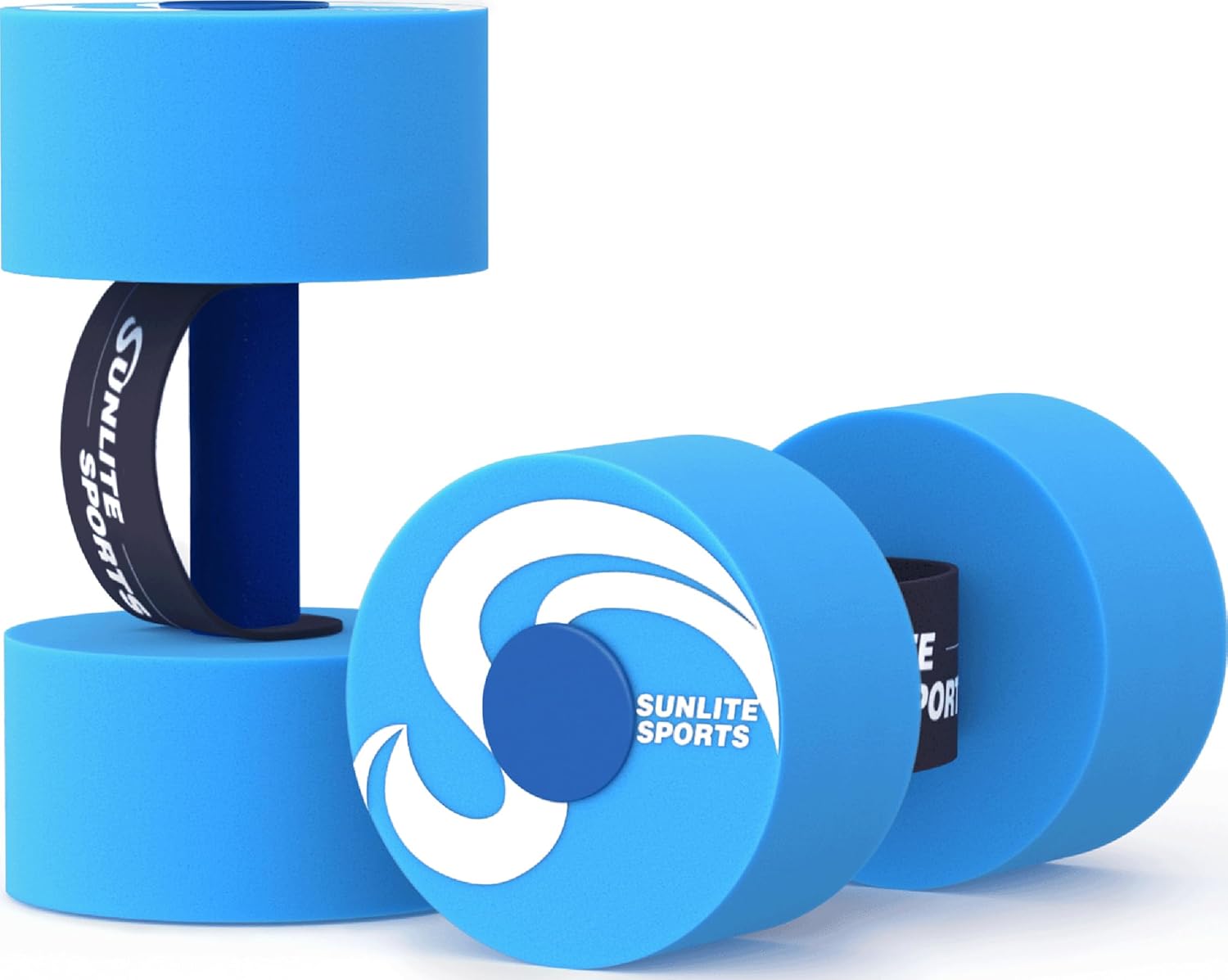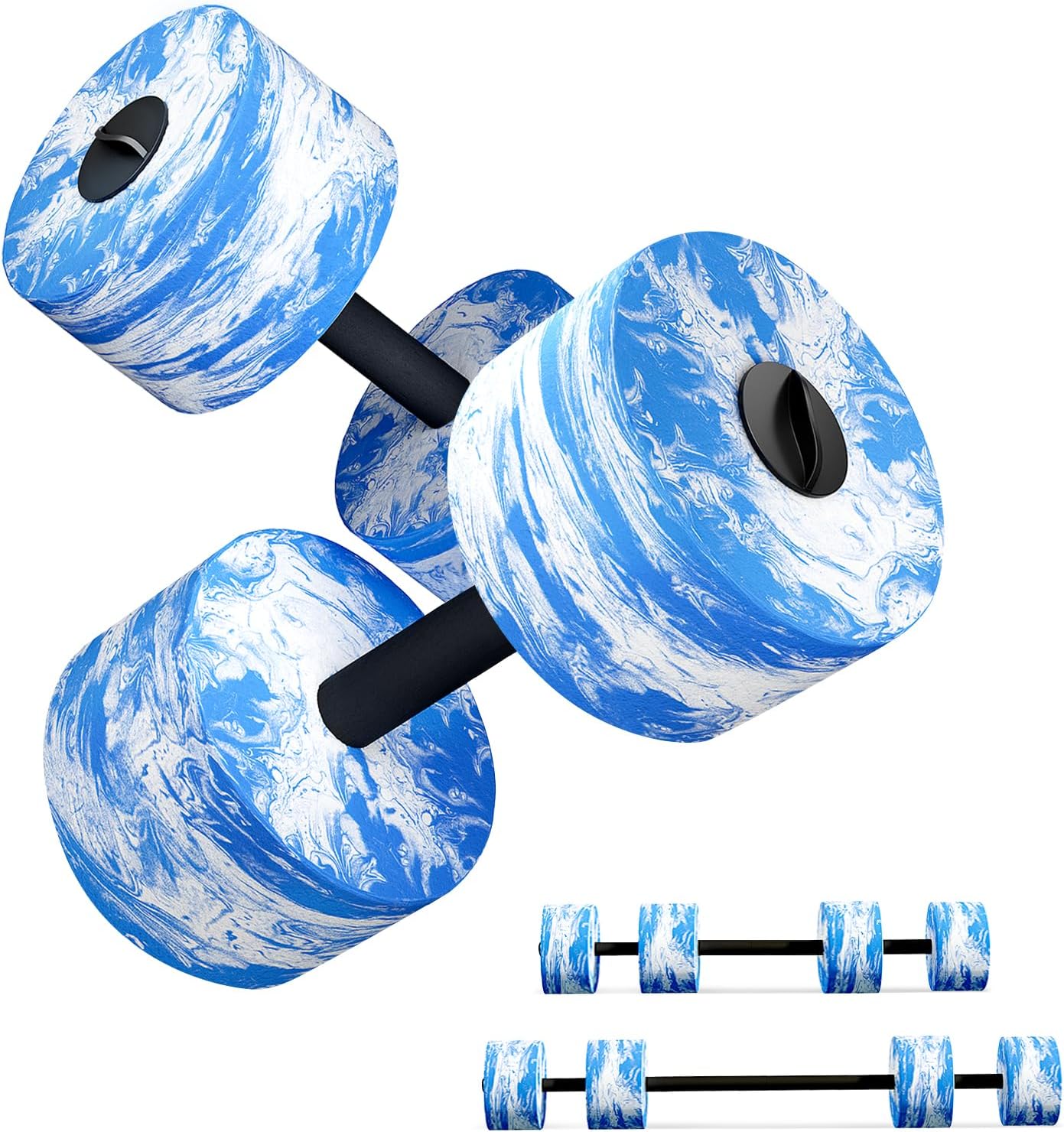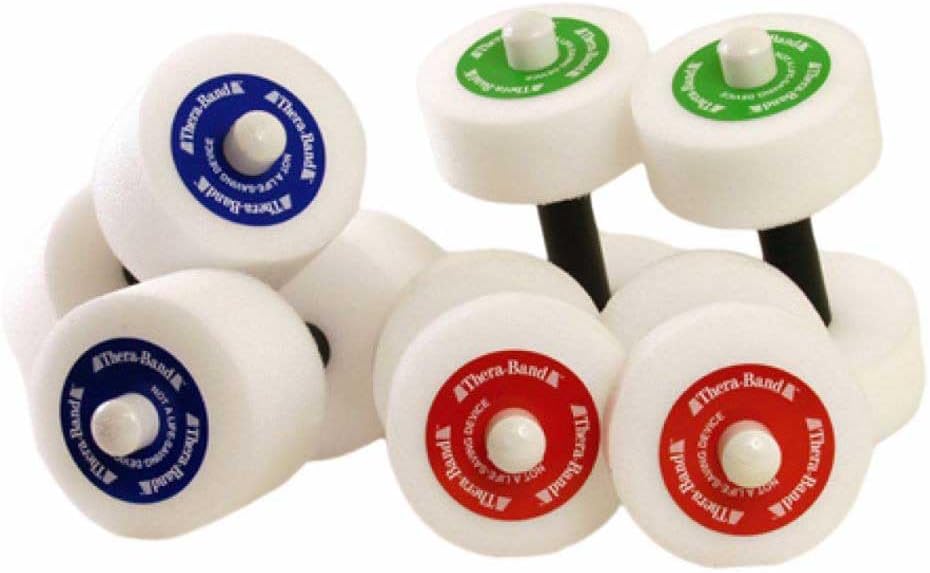How To Use Water Weights With Confidence
How to use water weights? Well, picture this: someone at the gym buys a pair, fills them up, and starts jogging through the lobby because they forgot “water weights” were meant for the pool.
Security footage captures them slipping, splashing, and reinventing aquatic chaos on land. That is not what we are about here.
Today, we will break down exactly how to use water weights the right way so they help you build strength, protect your joints, and make your pool time actually fun rather than a rescue mission.
Step-by-Step: How to Use Water Weights Correctly
Here is the simplest way to master how to use water weights without confusion or bad habits sneaking in.
1. Choose the Right Water Weights
Start with foam-based water weights if you are new. They float, so resistance comes from pushing them through water, not lifting them up. Heavier foam sizes increase resistance because they displace more water, not because they weigh more outside the pool.
For most people, a “medium” pair is best when starting out. Many trainers recommend brands considered the best water weights for pool exercise because they keep buoyancy consistent over time and resist chlorine damage.
2. Find the Right Depth
Stand in chest-deep water. At this depth, the water supports about 80% of your body weight, which keeps the workout joint-friendly while giving your arms room to move through a full range.
3. Set Your Posture Before Moving
Feet shoulder-width apart, knees slightly bent, stomach muscles firm but not rigid, shoulders back and relaxed. Good posture prevents shoulder strain and helps you control the weights instead of flinging them around.
4. Keep the Weights Underwater
The moment you lift them above the surface, resistance drops to nearly zero. Keep them fully submerged so the water itself provides constant challenge.
5. Move Slowly and Evenly
Water resists movement in both directions. Pushing down fast but letting the weights float back up quickly cheats your muscles out of half the workout. Control every inch of the motion.
6. Start with Basic Moves
- Front raises: Arms forward from thighs to shoulder height, then back down.
- Side raises: Arms out to the sides up to shoulder height, then back down.
- Chest presses: Push forward from chest to straight arms, then return.
- Arm curls: Palms up, bend elbows to shoulders, then back down.
- Core twists: Arms out front, twist torso side to side slowly.
Begin with 2 sets of 10–12 reps each, resting 30 seconds between sets.
7. Add Walking in the Pool
Between sets, walk the width of the pool with weights underwater by your sides. This adds cardio and balance training at once, turning the workout into full-body conditioning.
8. Progress Gradually
After 2–3 weeks, increase either your reps, your session length, or the foam size for more resistance, but never all at once. Slow progression prevents overuse injuries.
That is the core of how to use water weights safely. Now let us go deeper into everything surrounding these workouts so you leave here with zero confusion.
|
|
|
|
How Do Water Weights Work?
Water weights resist your movement through buoyancy and drag, not traditional gravity loading like dumbbells. The foam blocks float, so your muscles work against the upward pull of the water and its thickness. The harder and faster you push, the more the water resists you.
According to aquatic therapy research, moving weights through water engages muscles concentrically (as you push) and eccentrically (as you control the return) while keeping joint impact low.
That is why water aerobics exercises are popular among people recovering from injuries or dealing with arthritis. The buoyancy unloads joints while water density gives enough resistance to build strength and endurance.
Choosing the Right Water Weights for Your Goals
Not every water weight is built the same. Here is what to consider:
- Foam Size: Larger foam = more resistance. Beginners should start small or medium before graduating to larger discs.
- Handle Comfort: Look for padded grips if you have wrist issues or plan longer sessions.
- Material Quality: EVA foam resists chlorine damage better than cheaper options.
Some fitness instructors recommend specific brands often called the best water weights for pool exercise because they stay buoyant after months of use and have ergonomic handles that reduce wrist strain.
Safety Tips Before Every Session
Safety in the water is about preparation, not fear. Here are essential checks before starting:
- Warm up with 3–5 minutes of easy pool walking.
- Check the water depth. Chest-high water works best for most exercises.
- Keep movements slow at first. Speed plus water resistance can overload shoulders if you are unprepared.
- Listen to your body. Any sharp pain means stop immediately.
Aquatic therapists often note that people with shoulder injuries should keep movements within pain-free ranges and avoid locking joints straight.

Essential Water Exercises for Beginners
Once you have posture and safety sorted, try this simple circuit using water aerobics weights:
- Front Raises – 12 reps
- Side Raises – 12 reps
- Chest Presses – 12 reps
- Arm Curls – 12 reps
- Core Twists – 12 reps each side
- Walking in the Pool – 1 minute
Repeat the circuit 2–3 times with 30–60 seconds rest between rounds. This covers major muscle groups while keeping intensity manageable.
Swimming Pool Cardio Workouts with Water Weights
Many people only lift the weights, but you can turn them into full cardio tools. Try this:
- Walk forward across the pool while pushing weights underwater like you are cross-country skiing.
- Jog in place while punching forward with the weights underwater.
- Side-step across the pool while performing lateral raises.
These moves keep your heart rate elevated, turning strength training into swimming pool cardio workouts without pounding your joints like running on pavement.
Building a Full 30-Minute Water Aerobics Session
Here is a balanced plan you can follow three times a week:
Warm-Up (5 min)
Easy walking in the pool, arm circles without weights, gentle twists.
Strength Circuit (15 min)
Front raises, side raises, chest presses, arm curls, core twists (2 rounds, 12 reps each).
Cardio Intervals (5 min)
Jog in place with forward punches for 30 seconds, rest 15 seconds, repeat 6 times.
Cool Down (5 min)
Slow walking, shoulder rolls, deep breathing.
This mix hits strength, cardio, and mobility in one session.

Common Mistakes to Avoid
- Going Too Fast: Water punishes speed with joint strain if you are not ready.
- Working Above the Surface: Zero resistance up there, keep them underwater.
- Skipping Core Engagement: Weak posture leads to back strain.
- Using Oversized Weights Too Soon: Start small, progress later.
Advanced Variations Once You Master Basics
- Single-Arm Movements: Challenge core stability by using one weight at a time.
- Offset Stance Workouts: Stand with one foot forward to train balance while lifting.
- Rotational Presses: Combine twists with presses for core and upper-body power.
These variations keep workouts fresh while building more strength.
Benefits of Water Aerobics Exercises with Weights
Research from organizations like the CDC confirms water aerobics exercises improve cardiovascular health, muscular endurance, and flexibility while reducing joint stress. People with arthritis, back pain, or recovering from injuries often find water workouts easier to tolerate than land-based exercise.
A 12-week study on aquatic resistance training showed significant gains in upper-body strength and balance among older adults compared to walking alone. That makes water aerobics weights not just fun but clinically useful.
Walking in the Pool with Water Weights
This deserves its own mention because it is simple yet powerful. Walking in the pool while holding weights underwater engages the arms, legs, and core simultaneously. The water’s drag turns every step into resistance training while buoyancy keeps stress off knees and hips.
Add forward, backward, and side steps for a full lower-body workout without needing extra equipment.
How Often Should You Use Water Weights?
For general fitness:
- 2–3 times per week, nonconsecutive days, 20–30 minutes each session.
For strength gains:
- Gradually add sets and resistance over 6–8 weeks.
For rehab:
- Follow your physical therapist’s guidance: often shorter, lighter sessions 3–4 times weekly work best.
Who Should Avoid Water Weight Workouts?
While safe for most people, those with open wounds, uncontrolled heart conditions, or certain balance disorders should consult a physician before starting. Also, if your pool lacks supervision, never exercise alone if you are not a strong swimmer.
Caring for Your Water Weights
- Rinse in fresh water after each use to remove chlorine.
- Air-dry fully before storage to prevent mold.
- Inspect handles and foam monthly for cracks or leaks.
Well-maintained equipment can last years without losing buoyancy.
The Bottom Line on How to Use Water Weights with Confidence
By now, you know how to use water weights safely, effectively, and creatively. Start with the basics: chest-deep water, good posture, slow controlled movements and progress gradually. Mix strength, cardio, and balance drills for full-body benefits.
Whether you are looking for low-impact workouts, recovering from an injury, or simply want to make pool time productive, water weights offer a simple, proven tool. And now you have every step, tip, and safety check needed to use them like a pro.







